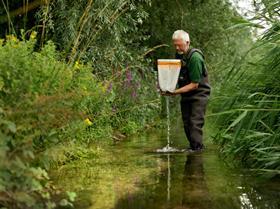
Leafy salad producer Vitacress has partnered with fish trade body Salmon & Trout Conservation (S&TC) to reduce phosphate outputs from the watercress industry.
Tests on the River Itchen, which is an area of special conservation close to Vitacress’ Pinglestone Farm in Hampshire, found that the water has excessive levels of phosphate and fine sediment, from a variety of sources, meaning it is “a shadow of its former self”.
Following the results, S&TC is working with the company, along with Portsmouth University, to monitor phosphate levels as the farm returns to full commercial production in 2018.
S&TC chief executive Paul Knight said: “We believe continuous monitoring of phosphate levels in industry discharges is the only way to fully capture seasonal peaks and better understand the impacts these discharges are having on the river.
“We applaud Vitacress for working with us to go beyond the EA’s current monthly spot checks – to properly monitor the impact of the watercress industry on the river environment. We will work together to ensure this data drives improvements in the rivers ecology, while ensuring watercress is a truly environmentally sustainable product.”
Chris Hall, managing director of Vitacress Salads, said: “We’re delighted to be working together with S&TC and the University of Portsmouth as part of our ongoing commitment to sustainable farming.
“The learnings from Pinglestone will be applied across all Vitacress’ watercress farms, and shared with the industry to develop best practice in watercress farming.”



